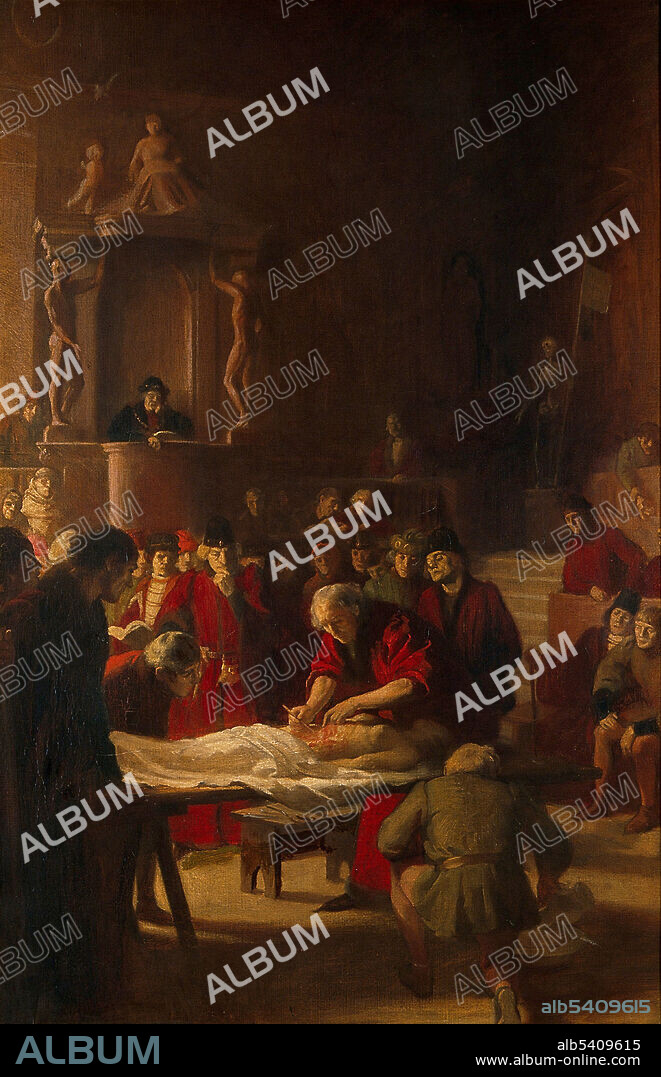alb5409615
Mondino de Luzzi, Italian Anatomist and Surgeon

|
Ajouter à une autre Lightbox |
|
Ajouter à une autre Lightbox |



Avez-vous déjà un compte? S'identifier
Vous n'avez pas de compte ? S'inscrire
Acheter cette image.
Sélectionnez l'usage:

Titre:
Mondino de Luzzi, Italian Anatomist and Surgeon
Légende:
Voir la traduction automatique
Mondino de Luzzi, the Italian anatomist, making his first dissection in the anatomy theatre at Bologna, 1318. Mondino de Luzzi (1270 - 1326) was an Italian physician, anatomist, and professor of surgery. He was the first to incorporate a systematic study of anatomy and dissection into a medical curriculum. He performed his first public dissection in Bologna in January 1315 in the presence of medical students and other spectators. The proceedings were formally sanctioned by the Vatican, and the subject was mostly likely a female executed criminal. Mondino's teaching methods were unique because he often performed dissections in person and served the role of demonstrator himself, carefully studying the cadaver and incorporating this personal experience into his text and teaching. His major work, Anathomia corporis humani, written in 1316, is considered the first example of a modern dissection manual, the first true anatomical text and remained the most widely used anatomical text for 250 years. He died in 1326 at the age of 55 or 56. Oil painting by Ernest Board, undated.
Crédit:
Album / Science Source / Wellcome Images
Autorisations:
Modèle: Non - Propriété: Non
Questions sur les droits?
Questions sur les droits?
Taille de l'image:
3001 x 4650 px | 39.9 MB
Taille d'impression:
25.4 x 39.4 cm | 10.0 x 15.5 in (300 dpi)
Mots clés:
ANATOMIE • AUTOPSIE • CADAVRE • CORPS CADAVRES • CORPS HUMAIN • CORPS • DÉPOUILLE • DISSECTION • HOMME • ITALIE • MEDICAL • MORT CADAVRES • PEINTURE A L'HUILE
 Pinterest
Pinterest Twitter
Twitter Facebook
Facebook Copier le lien
Copier le lien Email
Email
